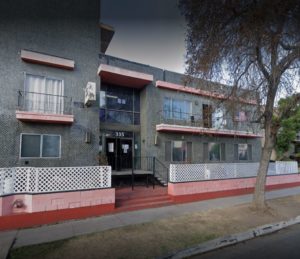
One time, after a failed attempt to get my son hospitalized, I spoke briefly with a police officer outside my son’s Board and Care. The officer asked me, “Is this a Halfway House?” A Halfway House is an older, informal name for a transitional home, where people with drug abuse or criminal backgrounds get counseling and support so they can return to normal and more permanent housing. The current Sober Living Houses fill some of those needs.
It was obvious, however, that this police officer was not even familiar with the term “Board and Care” or aware of their purpose in his own service area. I can’t speak with authority about the Board and Care facilities around the country or even for the whole state of California. But when my son was going through his most difficult period near the beginning of his mental illness, he lived at nine different L.A. County Board and Cares in six years.
Even within the Adult Care Residential Facilities lists, one has to wade through the vast majority of homes listed, which are mostly only for those with Developmental Disabilities. They are generally NOT appropriate places for adults living with schizophrenia. I later advised fellow parents going through the lists to just ignore the places with six beds or less, as those were almost always for the Developmentally Disabled. In fact, I spoke with one house manager for those with DD, and she said that she hardly ever allows someone with schizophrenia to live there since it is not a good mix, socially or intellectually, and their needs can be quite different and incompatible.
During my son’s period of Board and Care living, he stayed at one place with only 15 residents at full capacity, while other facilities were able to board triple that amount and all the way up to a few larger facilities for 100 or more residents. None of them were ever a healthy, safe, therapeutic environment. The smaller facilities had a slightly more homey feel (if we could call it that), but less activities and resources to offer residents. The larger facilities generally had more amenities for residents, including transportation to day-programs and extra community rooms for exercise equipment, musical instruments or art projects (which most residents did not use).
One might also assume that the smaller facilities were better supervised, but that was not the case and generally speaking: the smaller the facilities-the smaller the staff. As I wrote in my memoir, I was in search for the ideal Board and Care for my son, until he had lived at a half dozen and I had also visited a few dozen others just out of curiosity. I found them all to be more similar than different in all the bad ways. These were dirty, depressing, and usually dilapidated buildings in unsafe areas of Los Angeles.
The staff included people who were unqualified to care for the psychologically fragile people living there, either in temperament or in formal training. Even some of the unintentionally sarcastic comments made to me by staff, when my son was interviewing, were unsettling and should have been a tip-off that we needed to continue our search. The problem on our end however, was the sheer lack of vacancies at these Board and Cares. “Beggars can’t be choosers,” as my own mother used to say.
Board and Cares are a better option than homelessness: that is for sure. There may be some trained staff, medication management, and three meals per day served, along with snacks. But there is no universal or legally enforced policies when it comes to helping the residents with their ADL’s (Activities of Daily Living), such as daily showering or changing clothes.
Board and Cares might be a necessity for families who cannot have their mentally ill loved one live at home with them. But if that is the case, the family needs to make frequent visits to monitor the level of care, take their loved one away from the facility for regular outings and also supplement their loved one with other forms of therapy, academic, job training or social outlets. Otherwise, a person living in a Board and Care could isolate in their room or just wander around panhandling all day and get much worse before anyone would even notice.
What happened to the Board and Care system in L.A. County during the COVID pandemic may have been replicated in other counties and states as well. There was a mixture of emergency funding offered to some Board and Care operators to help keep the Board and Cares open, since there has been a trend for many years for them to close due to financial struggles.
Kartar Diamond is a Mental Illness Advocate and author of Noah’s Schizophrenia: A Mother’s Search for Truth



Leave A Comment
You must be logged in to post a comment.